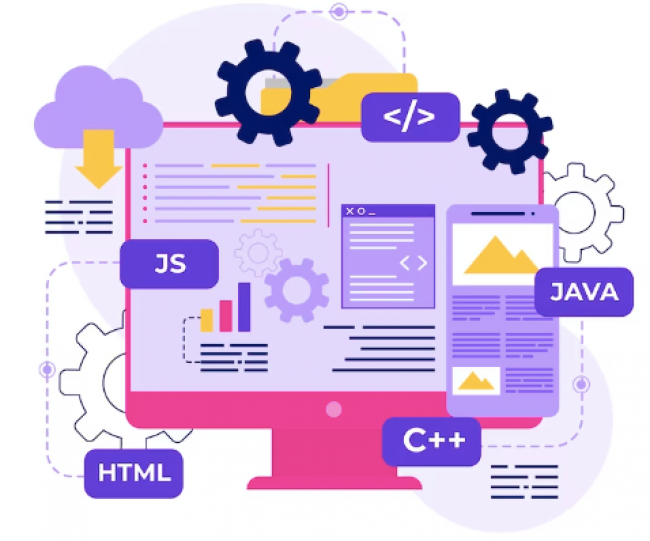
Cloud computing has revolutionized the way we access, store, and manage data and applications. Technology has had a profound impact on many areas of computing, including. From increased efficiency and reduced costs to improved security and emerging technologies, the impact of cloud computing on the generations of operating systems has been significant. As the demand for cloud computing continues to grow, it is likely that the impact of cloud computing on operating systems will continue to evolve and shape the future of computing.
Cloud computing has had a significant impact on operating systems in several ways:
1. Increased Efficiency: Cloud computing allows users to access applications and data from anywhere, without having to worry about managing and maintaining their own hardware. This has increased efficiency and reduced the workload of operating systems, as they no longer need to manage and maintain the underlying hardware infrastructure. It ensures the evolution of the operating system in different aspects.
2. Reduced Costs: By using cloud computing, users can reduce their costs by avoiding the expense of purchasing and maintaining hardware, as well as the cost of managing and maintaining their own operating systems.
3. Scalability: Cloud computing provides users with the ability to scale their resources up or down as needed, making it possible for them to handle fluctuations in demand. This has reduced the need for operating systems to handle these fluctuations and has improved their ability to handle large-scale operations.
4. Improved Security: Cloud computing providers typically have more advanced security measures in place to protect user data and applications, compared to traditional operating systems. This has reduced the burden on operating systems to manage and maintain security and has improved the overall security of the systems.
5. Emerging Technologies: Cloud computing has provided operating systems with the opportunity to incorporate new technologies and innovations, such as artificial intelligence, machine learning, and the Internet of Things. This has allowed operating systems to become more sophisticated and capable of handling complex operations.
Cloud computing has had a significant impact on operating systems and has changed the way that they are used and managed. By providing increased efficiency, reduced costs, scalability, improved security, and the opportunity to incorporate emerging technologies, cloud computing has transformed the operating system landscape and is set to shape the future of computing through different generations of the operating system.
Here are some of the new trends in cloud computing:
1. Multi-cloud and Hybrid Cloud: The trend of using multiple cloud service providers to create a hybrid cloud solution that can maximize cost, performance, and security benefits.
2. Edge Computing: This trend involves moving computing and data processing closer to the edge of the network, where data is generated, to reduce latency and improve the reliability of cloud computing.
3. Artificial Intelligence and Machine Learning: The integration of AI and ML into cloud computing is rapidly growing and is being used to solve complex real-world problems, such as predictive maintenance, fraud detection, and natural language processing.
4. Internet of Things (IoT): The use of cloud computing to process, analyze, and act on the large amounts of data generated by IoT devices is becoming increasingly popular. Cloud computing has provided operating systems with the opportunity to incorporate new technologies and innovations, such as artificial intelligence, machine learning, and the Internet of Things.
5. Serverless Computing: This is a trend that involves running applications and services without having to manage infrastructure, making it easier to build and run cloud-based applications.
Cloud computing is helping to solve real-world problems by providing organizations with the ability to:
=> Scale their infrastructure and services quickly and cost-effectively.
=> Access and analyze large amounts of data in real time.
=> Improve collaboration and communication within teams.
=> Increase the speed and agility of innovation by allowing organizations to experiment and test new ideas and solutions more quickly.
=> Enhance security and compliance by allowing organizations to leverage the expertise and resources of cloud service providers.
Cloud computing has changed the way operating systems are evaluated. Some of the factors that are considered when evaluating operating systems for use in cloud environments include:
1. Scalability: The ability of an operating system to scale horizontally, meaning adding more nodes to handle increased demand, is a key factor in cloud computing.
2. Resource Management: An operating system must be able to efficiently manage and allocate resources such as CPU, memory, and storage to multiple applications running on the same physical or virtual machine.
3. Performance: In cloud computing environments, performance is critical as multiple applications and services must run quickly and efficiently in order to meet the demands of users.
4. Security: Operating systems used in cloud computing must be secure and provide adequate protection against cyber threats.
5. Automation: Automation is an important aspect of cloud computing, as it enables the deployment, management, and scaling of cloud applications and services with minimal manual intervention.
6. Interoperability: Operating systems must be able to work with a variety of different cloud services and technologies, such as containerization and virtualization, in order to support the needs of organizations. This has allowed operating systems to become more sophisticated and capable of handling complex operations.
7. Cost: The cost of an operating system is also an important factor, as organizations need to keep their overall cloud computing costs under control.
8. Support: The availability of a strong support network, including online forums, documentation, and customer support, is also important when evaluating operating systems for cloud computing.
In conclusion, cloud computing has transformed the evolution of the operating system, providing users with increased efficiency, reduced costs, scalability, improved security, and the opportunity to incorporate emerging technologies. Operating systems no longer need to manage and maintain the underlying hardware infrastructure, and are free to focus on their core functions. As the demand for cloud computing continues to grow, it is likely that the impact of cloud computing on operating systems will continue to evolve and shape the future of computing. The transition to cloud computing has opened up new possibilities and has allowed operating systems to become more sophisticated and capable of handling complex operations.
















